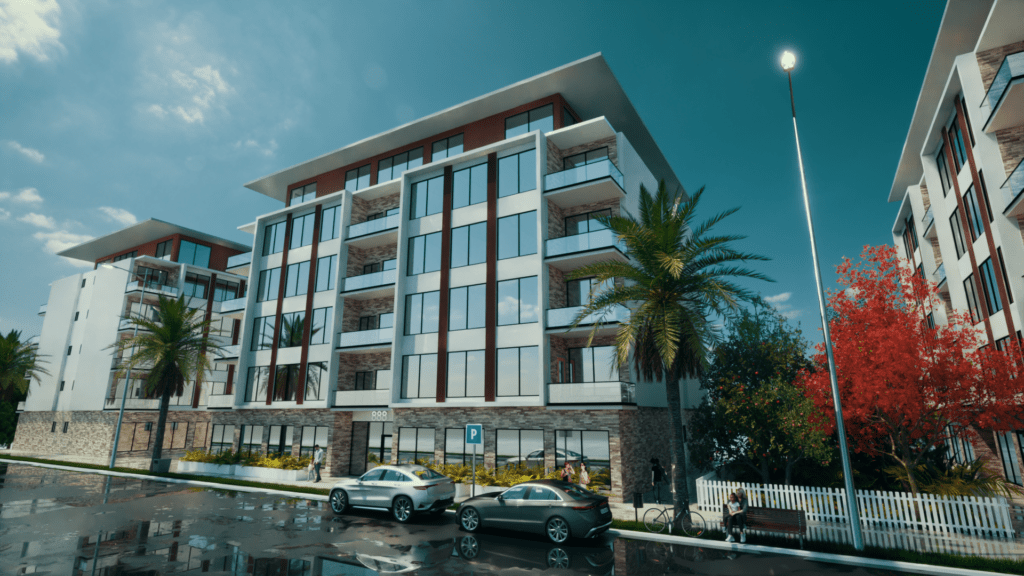Introduction
In the ever-evolving world of real estate, technology continues to play a vital role in transforming the industry. One such innovation that has gained significant traction is Virtual Reality (VR). Real estate agents can now leverage the power of architectural VR rendering and 3D architectural renderings to enhance their marketing strategies and save substantial costs. Let’s explore how VR for real estate can revolutionize the way properties are showcased, ultimately leading to cost savings for agents.
Cost Reduction in Physical Staging:
Staging a property for open houses or showings can be a costly endeavor. Furniture, decor, and professional staging services can add up to significant expenses. However, with VR for real estate, agents can virtually stage a property, eliminating the need for physical staging. By showcasing various furniture arrangements and interior designs through VR, agents can provide potential buyers with a clear vision of the property’s potential. This not only saves money but also enables agents to showcase multiple design options, appealing to a broader range of buyers.
Immersive VR Tours:
With architectural VR rendering, real estate agents can provide potential buyers with immersive VR tours of properties without the need for physical visits. By creating realistic virtual environments, agents can showcase properties in detail, allowing potential buyers to explore every nook and corner. This eliminates the need for multiple property visits, saving both time and money for the agent and the buyer. VR tours also enable remote buyers to view properties from any location, expanding the reach of the agent’s marketing efforts.
Enhanced Visualization:
Traditional 2D floor plans and static images can sometimes fail to convey the true essence of a property. However, with 3D architectural renderings, agents can provide clients with a photorealistic representation of the property’s design, layout, and aesthetics. By using VR headsets, potential buyers can experience the property in a realistic and immersive manner, gaining a better understanding of the space. This heightened visualization helps agents in effectively marketing the property, increasing the chances of a successful sale.
Global Reach and Time Savings:
3D architectural renderings enable real estate agents to market properties to a global audience, saving on travel costs and expanding their reach. Buyers can experience properties as if they were physically present, regardless of their location. This eliminates the need for agents to organize multiple property viewings and reduces travel expenses for both agents and buyers. Additionally, the ability to provide detailed property information through VR reduces the time spent on repetitive showings and allows agents to focus on serious, qualified buyers.
How Do Architectural Renderings Compare with Traditional Real Estate Marketing Techniques?
Traditional real estate marketing techniques, such as photographs and brochures, are still widely used. However, they are limited in their ability to showcase a property. Photographs can be misleading and do not provide a complete picture of the property. Brochures, on the other hand, can be overwhelming and difficult to navigate.
Architectural renderings, on the other hand, provide a realistic and detailed representation of the property. They can be customized to include different features and provide a more comprehensive view of the property. This makes them a more effective marketing tool than traditional techniques.
Early Design Review and Feedback:
VR for real estate is not limited to marketing; it can also be a valuable tool during the pre-construction or renovation phase. Architects, developers, and real estate agents can utilize 3D renderings and VR technology to visualize designs and gather feedback before actual construction begins. This enables them to identify and rectify any design flaws or modifications early on, saving significant costs that may arise from making changes during or after construction.
Conclusion
Architectural VR rendering has transformed the real estate industry, providing real estate agents with innovative tools to save money and enhance their marketing efforts. From immersive VR tours to cost-effective virtual staging, these technologies offer a range of benefits, including global reach, time savings, and improved visualization. By embracing VR for real estate, agents can attract more potential buyers, reduce expenses, and increase overall efficiency in their business operations. As the real estate industry continues to evolve, incorporating VR and 3D rendering into marketing strategies is becoming increasingly essential for success. Contact our team to know how you can use this service for your business, today!

